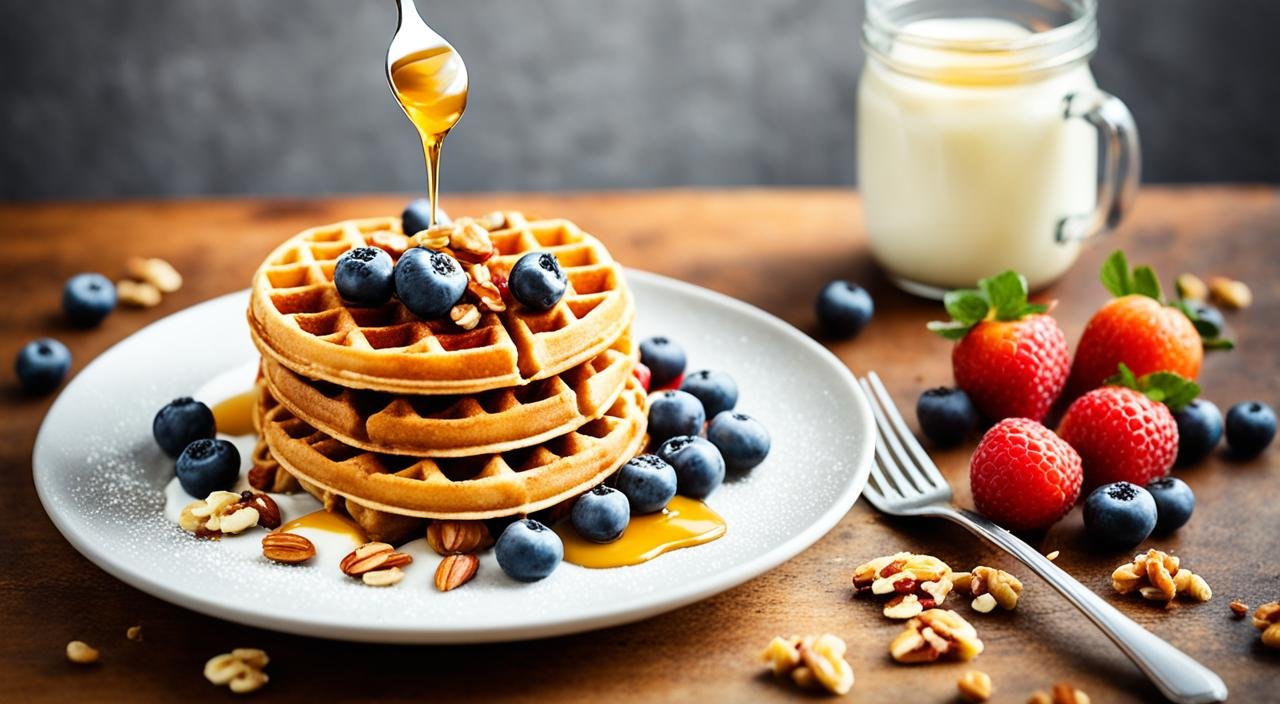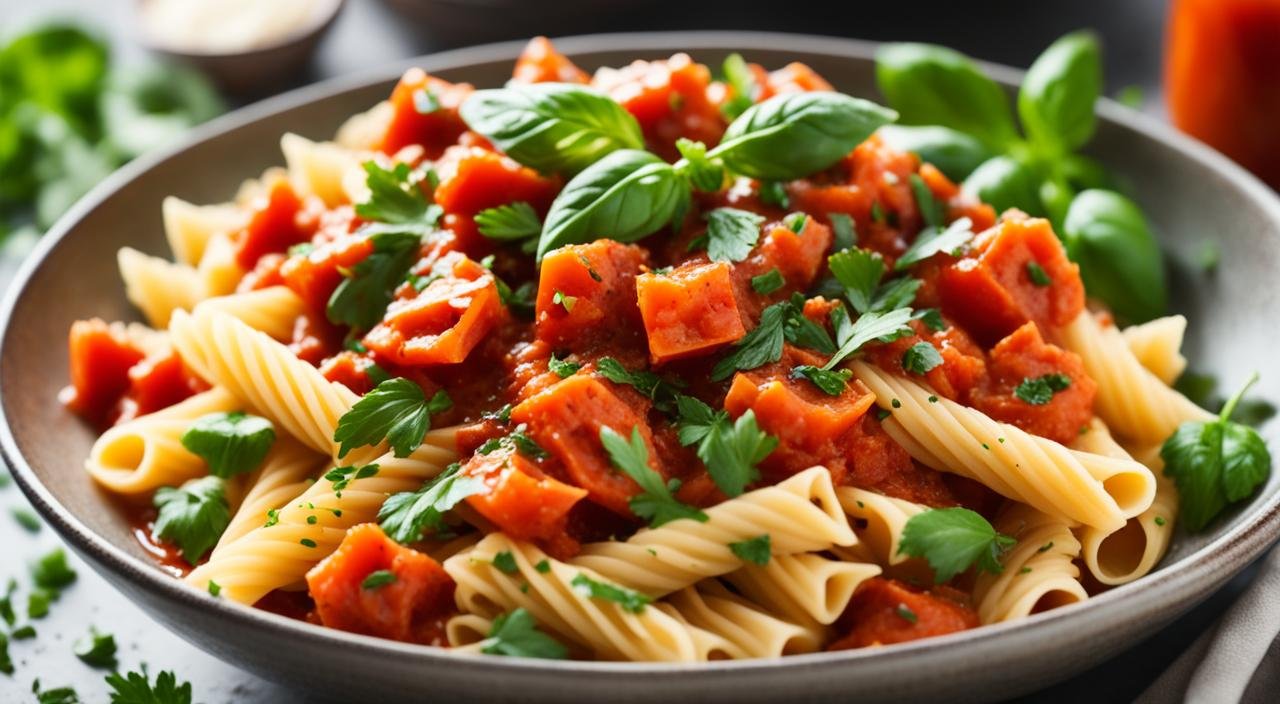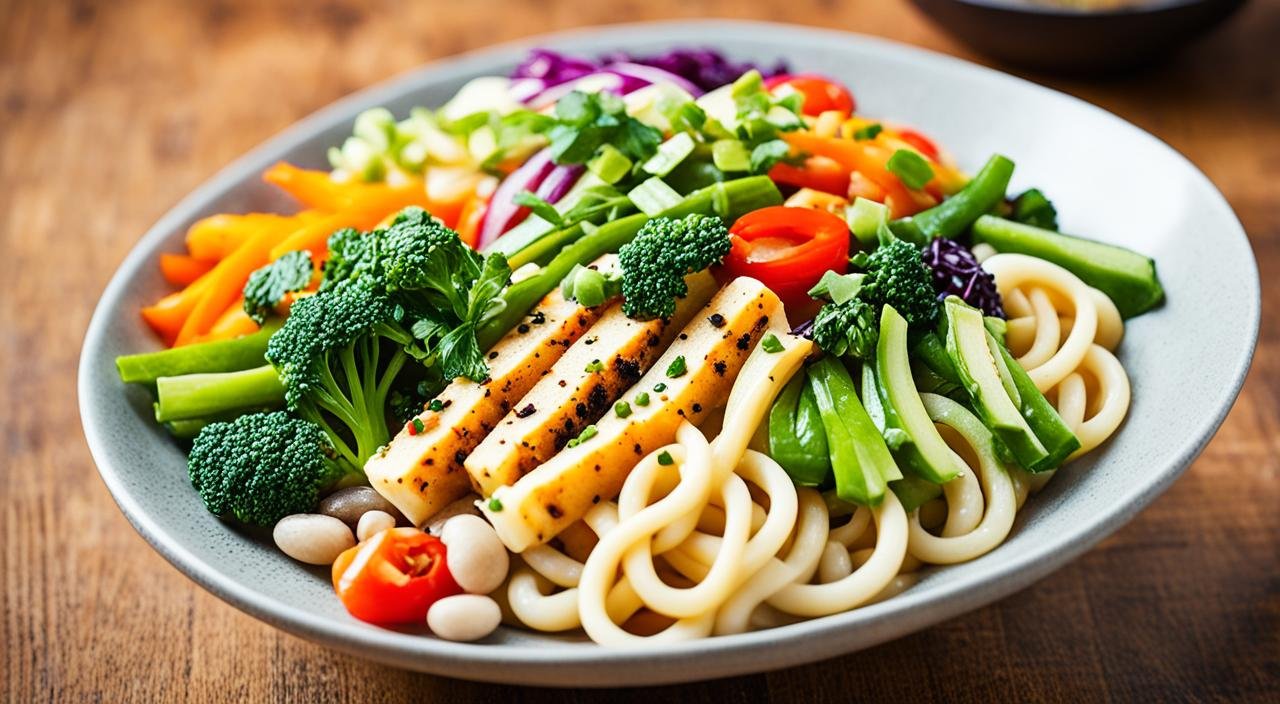Need gluten-free Passover recipes? Our family-tested meals keep traditions alive while staying 100% gluten-free. From matzo balls to desserts, these recipes make Passover kosher and celiac-friendly!
Introduction Gluten Free Passover Recipes
Passover is a special Jewish holiday that celebrates freedom and new beginnings. But, it can be challenging for those following a gluten-free diet. With creativity and the right ingredients, you can create a delicious and inclusive Passover feast that everyone can enjoy.
Key Takeaways
- Discover a diverse range of gluten-free Passover recipes, including soups, main dishes, side
and desserts. - Explore traditional Passover staples like matzo ball soup and brisket, along with innovative gluten-free twists.
- Find recipes that accommodate various dietary needs, including vegan, dairy-free, and Paleo options.
- Learn how to make homemade gluten-free matzo and delectable blintz delights for your Passover celebrations.
- Uncover the secrets to creating a satisfying Passover feast without sacrificing your gluten-free lifestyle.
Understanding Gluten-Free Passover Dietary Needs
Nutritional Guide: Gluten-Free Passover Ingredients
Going gluten-free doesn’t mean compromising on nutrition. Our guide reveals how to power up your Passover plate with nutrient-rich alternatives:
Key Nutritional Powerhouses:
- Quinoa: A complete protein source with 8 grams of protein per cup
- Almond flour: Packed with vitamin E and healthy fats
- Sweet potatoes: Rich in vitamin A and fiber
- Chia seeds: Tiny nutritional giants loaded with omega-3
Comparison Table of Gluten-Free Flours for Passover
| Flour Type | Best Uses | Flavor Profile | Protein Content | Cost Per Pound |
|---|---|---|---|---|
| Almond Flour | Cookies, cakes | Nutty, sweet | 21g per cup | $8-12 |
| Potato Starch | Thickening, binding | Neutral | 0.5g per cup | $3-5 |
| Coconut Flour | Dense baked goods | Mildly sweet | 16g per cup | $4-7 |
| Tapioca Flour | Crispy crusts | Neutral | 0.3g per cup | $3-6 |
| Cassava Flour | All-purpose substitute | Mild, earthy | 2g per cup | $7-10 |
Real Voices: Managing Gluten-Free Passover
Sarah from Boston says: “My first Passover after my celiac diagnosis was scary. I didn’t know what I could eat. Now, five years later, I actually look forward to creating new gluten-free traditions with my family.”
Rabbi Cohen, who leads a congregation with many gluten-sensitive members, notes: “About 15% of our community follows gluten-free diets. We’ve adapted our communal Seder to include options everyone can enjoy.”
Michael, a dad from Chicago, shares: “When my daughter was diagnosed with celiac disease, I thought our family Passover traditions were over. But with some tweaks to old recipes, we didn’t miss a beat. Her face lit up when she tried our gluten-free matzo ball soup for the first time!”
According to a 2023 survey by the Celiac Disease Foundation, 67% of Jewish families with celiac members have found ways to maintain traditional Passover celebrations while staying gluten-free.
Protein Alternatives for Passover:
- Eggs: Nature’s multivitamin with 6 grams of protein
- Salmon: Omega-3 rich protein source
- Chicken and turkey: Lean protein options
- Legumes (for Sephardic traditions): Protein-packed alternatives
Celebrating a Gluten-Free Passover
Celebrating Passover with a gluten-free diet is easier than you think. Many traditional Passover foods don’t have gluten. So, you can still enjoy kosher for Passover flavors with some simple changes.
Enjoying Traditional Flavors with Dietary Accommodations
There are many ways to keep Passover traditions while eating gluten-free. Look for kosher for Passover and gluten-free labels when shopping. These products use ingredients like potato starch instead of regular flour.
Exploring Kosher for Passover Gluten-Free Options
The Passover pantry has lots of kosher for Passover, gluten-free foods. You can find noodles, cake mixes, cereals, and more. Reading labels helps you find tasty gluten-free options. Dairy products like ricotta, eggs, and yogurt are also kosher for Passover and great for gluten-free holiday recipes.
If you’re planning ahead for other holidays, our gluten-free corned beef recipe is perfect for St. Patrick’s Day and uses many of the same cooking techniques we use in our Passover brisket.
“Gluten-free Shemura Matzo, made under supervision to prevent fermentation, can cost around $32.00 per 1 pound box, while regular Kosher for Passover Matzo is priced at approximately $2.75-$3.00 per 1 pound box, making the gluten-free version significantly more expensive (around 14 times).”
Even though gluten-free Passover items cost more, they let people with dietary needs join in the celebration. With creativity and an open mind, you can make delicious gluten-free Passover dishes.
Gluten Free Passover Recipes
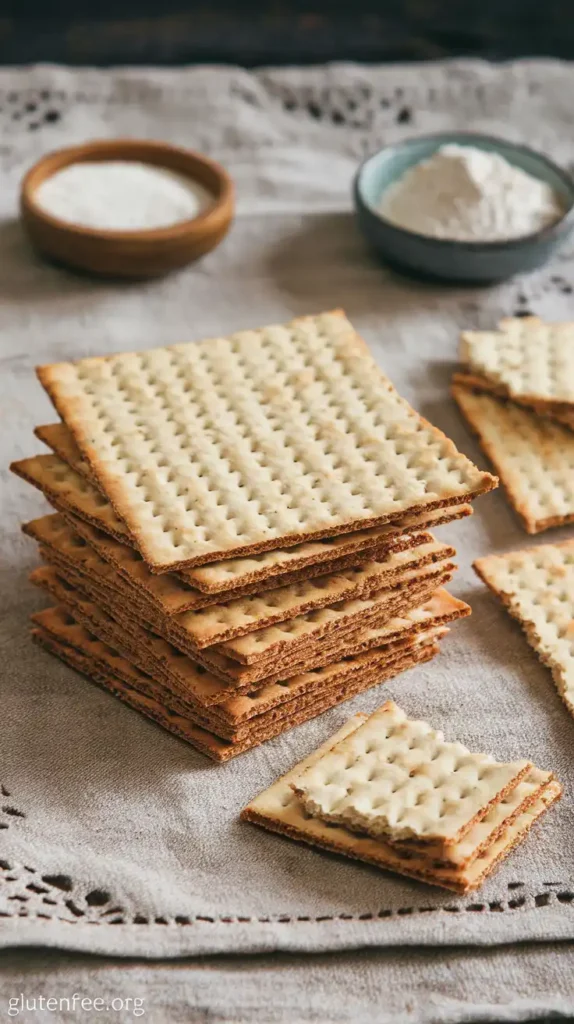
Homemade Gluten-Free Matzo
During Passover, gluten-free matzo is a key exception. It’s made with grains that have gluten. For those avoiding gluten, making homemade gluten-free matzo is easy. Our recipe uses gluten-free grains and oat flour for a Passover matzo that bakes in 18 minutes, avoiding leavening.
Gluten-Free Blintz Delights
Dairy is okay for Passover, making it great for gluten-free blintzes. These thin pancakes can be filled with dairy or dairy-free options. Enjoy these gluten-free blintz delights as dessert or a special brunch during Passover.
| Statistic | Value |
|---|---|
| Number of gluten-free vegan Passover recipes listed | 17 |
| Percentage of recipes that are oil-free | 41% |
| Percentage of recipes that are soy-free | 35% |
| Percentage of recipes that are nut-free | 29% |
| Percentage of recipes that are suitable for individuals who are gluten intolerant | 100% |
| Percentage of recipes that are suitable for individuals who are vegan | 100% |
| Number of recipes categorized as appetizers | 3 |
| Number of recipes categorized as entrees/main courses/sides | 9 |
| Number of dessert recipes | 5 |
| Percentage of dessert recipes that are nut-free | 60% |
| Percentage of dessert recipes that are soy-free | 80% |
“Gluten-free matzo is a popular food item, indicating a rising demand for gluten-free Passover options. Yehuda brand is mentioned as a preferred choice for gluten-free matzo, highlighting its prevalence and availability in stores like Whole Foods and online platforms such as Amazon.”
Quick & Easy Gluten-Free Charoset Recipe
This symbolic Passover food usually contains apples, nuts, wine, and cinnamon. Our gluten-free version tastes just like the traditional recipe!
Ingredients:
- 3 medium apples, peeled and diced
- 1 cup walnuts, chopped
- 2 tablespoons honey
- 1/4 cup sweet red wine (kosher for Passover)
- 1 teaspoon cinnamon
- Pinch of salt
Instructions:
- Mix all ingredients in a bowl
- Let sit for at least 1 hour in the refrigerator
- Serve as part of your Seder plate or as a sweet topping
Serving tip: This keeps well for 3-4 days in the refrigerator and tastes even better the next day!
My grandma always said, “Charoset is like the mortar that held together the Jewish people through hard times.” This recipe holds together gluten-free families during Passover just as well!
Looking for more sweet treats? After Passover ends, try making our homemade gluten-free fortune cookies for a fun family activity!
Embracing New Traditions
In recent years, Passover food has changed a lot. The Rabbinical Assembly, a group for Conservative Judaism, made a big move in 2015. They said certain foods like rice, corn, and legumes are now Kosher for Passover. This brought Ashkenazi and Sephardic Jewish communities together, making their food traditions the same.
This change means you can now try new gluten-free and plant-based dishes for Passover. You don’t have to stick to the old Passover foods anymore. Now, you can make dishes like zoodles, cauliflower fried rice, pastrami meatballs, and fudgy chocolate bundt cake. Naomi Nachman’s cookbook “Perfect for Pesach” has lots of recipes to try.
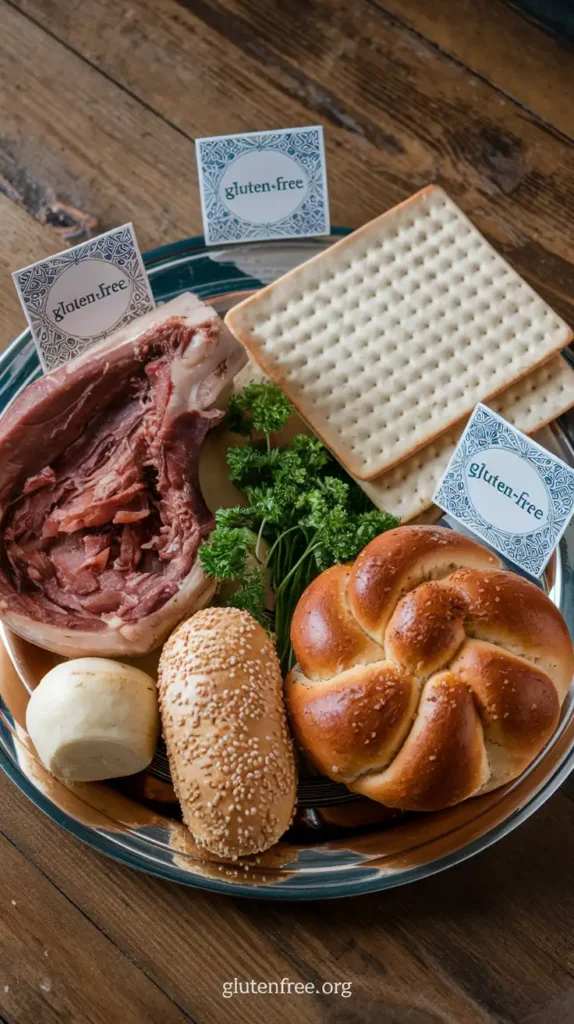
Historical Context of Passover Dietary Rules
The rules about what foods are allowed during Passover have changed over time. In ancient times, people avoided just five grains: wheat, barley, spelt, rye, and oats. The ban on kitniyot (like corn and rice) only started in the 13th century in Europe. This history shows that Passover traditions can adapt to meet community needs—good news for those who need gluten-free options today.
An old Jewish saying goes: “As we change, so do our customs.” This perfectly fits how Passover food rules have evolved to include gluten-free needs.
In 2015, the Committee on Jewish Law and Standards voted 15-0 to permit kitniyot, saying that “different communities have different customs, and no one custom is more correct than another.” This change opened doors for many more gluten-free options during Passover.
Incorporating Kitniyot into Your Passover Menu
When planning your Passover menu, think about adding kitniyot-based dishes. They can bring new tastes and textures to your table. Leah Schapira and Victoria Dwek’s cookbook “Passover Made Easy” has recipes for both traditional and kitniyot dishes. This lets you try different kinds of food.
- Try a refreshing Hawaiian Poke salad, featuring sushi-grade salmon and tuna, lemon juice, jalapeño, avocado, and mango.
- Indulge in Pastrami Meatballs, made with ground beef, pastrami, ketchup, and marinara sauce.
- Experiment with Southwestern Tuna with Rice, Corn and Black Beans, a flavorful and budget-friendly meal.
Using kitniyot in your Passover cooking lets you honor the holiday’s traditions and make your meals more interesting. Passover is a time to celebrate freedom. This means you can try different Jewish dishes and keep the spirit of the holiday alive.
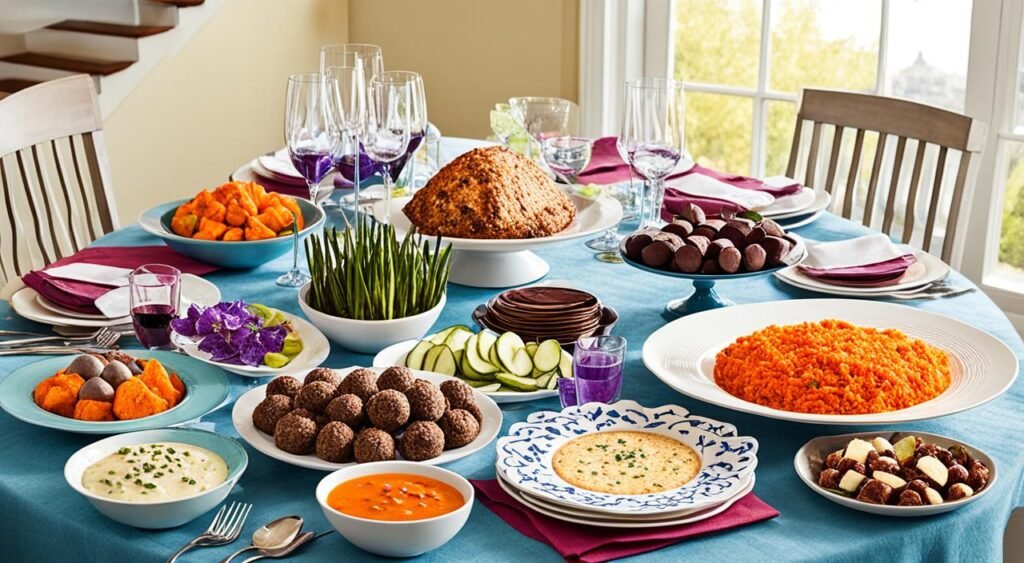
“Passover is a time to celebrate freedom, and this newfound culinary freedom allows you to explore the rich diversity of Jewish cuisine while upholding the spirit of the Passover celebration.”
Store-Bought Gluten Free Passover Treats
For those of us short on time or looking for convenient gluten-free Passover options, there are plenty of store-bought treats to enjoy. We can find certified gluten-free products labeled “Kosher for Passover” and “Non-Gebrokts” in the kosher section of our local grocery stores. These may include potato starch noodles, cake mixes, cereals, and even frozen foods like pizza crusts and waffles.
We can also discover a variety of gluten-free Passover candies to satisfy our sweet cravings during the holiday. From chocolate-covered delights to fruit-flavored confections, these store-bought treats offer a delicious way to indulge while adhering to Passover dietary restrictions.
Whether we’re seeking a quick snack or a special Passover dessert, the selection of store-bought gluten-free Passover options allows us to celebrate the holiday with ease. We can enjoy a wide range of flavors that cater to our dietary needs.
For those hot spring days during Passover, it’s good to know which ice creams are gluten-free so you can cool down while staying safe.
Where to Find Gluten-Free Passover Products
East Coast: Whole Foods, Wegmans, and Shop & Stop typically stock the largest selection of gluten-free Passover products, starting about 3-4 weeks before the holiday.
Midwest: Jewel-Osco and Mariano’s offer dedicated Passover sections with clearly marked gluten-free options.
West Coast: Gelson’s, Bristol Farms, and Trader Joe’s carry extensive gluten-free Passover selections.
Online: For those with limited local options, websites like Kosher.com and Amazon offer gluten-free Passover product bundles with delivery before the holiday.
According to market research, sales of gluten-free Passover products have grown by 32% over the past five years, showing rising demand and improving product availability.
A 2023 report by Kosher Food Industry News found that grocery stores now stock an average of 27 gluten-free Passover items, up from just 8 items in 2015.
Expert Corner: Tips for a Successful Gluten-Free Passover
Chef David Levy of “Kosher Culinary Institute” recommends: “Start preparing early. Make and freeze gluten-free Passover desserts up to a month ahead to reduce stress during the busy pre-holiday week.”
Nutritionist Rebecca Goldman suggests: “Don’t just focus on what you can’t eat. Passover is a great time to enjoy naturally gluten-free whole foods like fruits, vegetables, and proteins that are good for you.”
Rabbi Weinstein advises: “If you’re attending someone else’s Seder and have celiac disease, offer to bring a dish you can eat. This ensures you have something safe while sharing your gluten-free creation with others.”
Dr. Karen Altman, gastroenterologist at Mount Sinai Hospital, points out: “For celiacs, even trace amounts of gluten can cause damage. During Passover, it’s extra important to avoid cross-contamination since many foods are prepared from scratch using shared equipment.”
FAQs
Is matzah meal gluten-free?
Regular matzah meal contains wheat and is not gluten-free. Look for specially made gluten-free matzah products.
Can celiacs eat quinoa during Passover?
Yes! Quinoa was officially approved for Passover use by many rabbinical authorities in 2014. It’s not only gluten-free but also counts as kosher for Passover.
How can I avoid cross-contamination during Passover preparations?
Use separate cooking utensils, thoroughly clean surfaces, and prepare gluten-free foods first before working with regular flours.
Are potato products always kosher for Passover?
Not always. While potatoes themselves are kosher for Passover, some processed potato products might contain additives that aren’t. Always check for proper Passover certification.
Can I use regular gluten-free products during Passover?
Not necessarily. Regular gluten-free products might contain ingredients that aren’t kosher for Passover. Look specifically for items labeled both “gluten-free” and “kosher for Passover.”
I’m Dr. Shivani, a Kolkata-based nutritionist since 2015. After 10 years of igniting a love for healthy eating in young minds as a High School nutritionist teacher, I now help individuals unlock their full potential through personalized diet plans. My passion for writing and sharing nutrition knowledge (through blogs and observations) keeps my practice fresh and fuels my love for the field!


